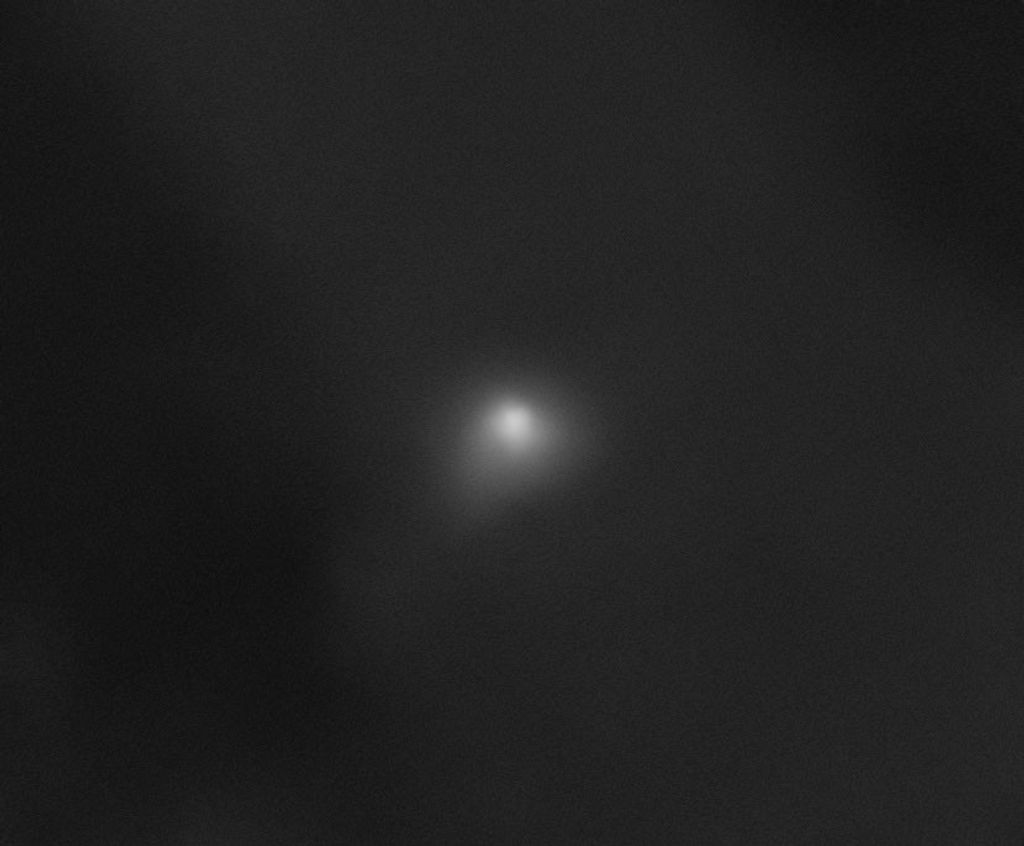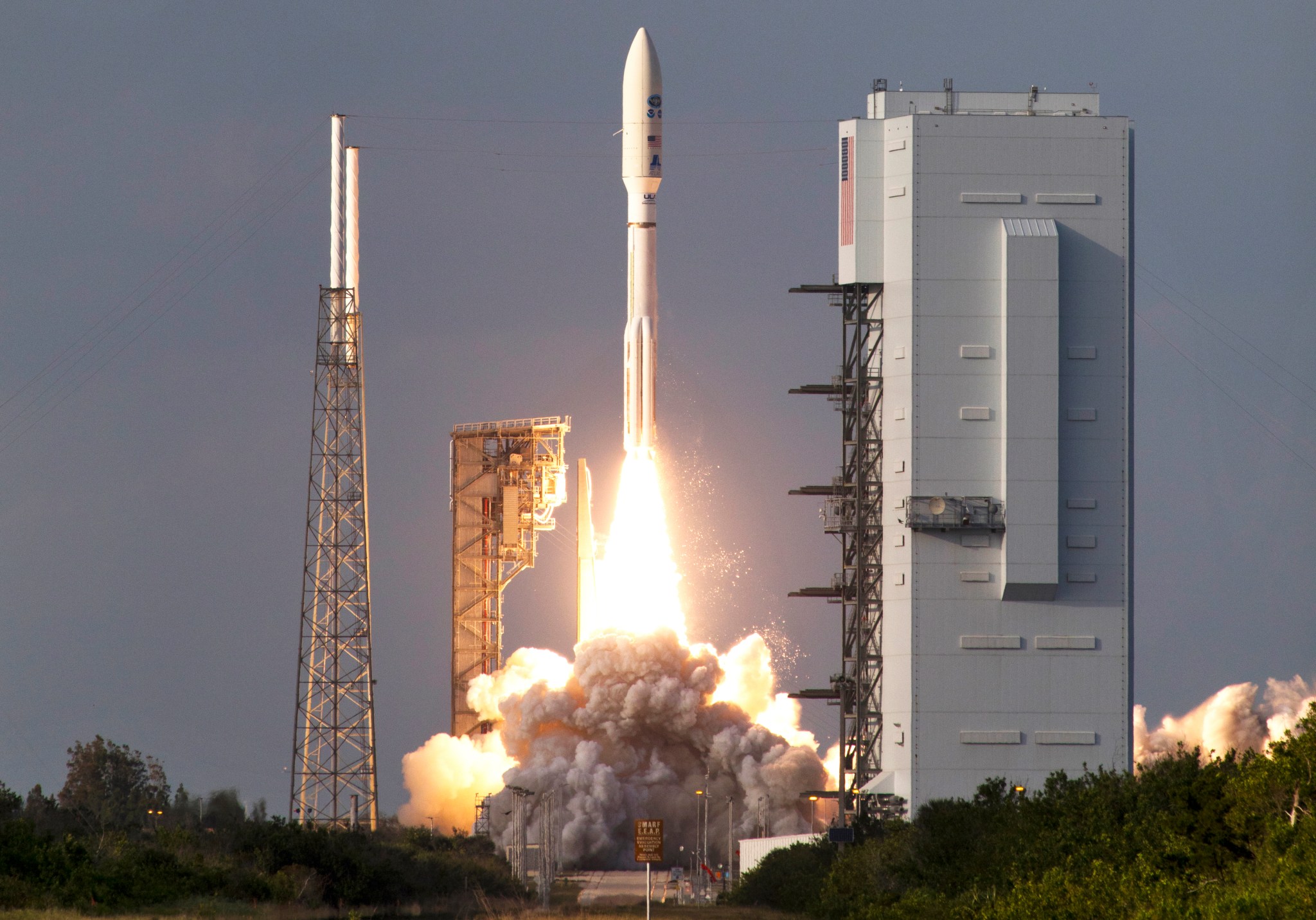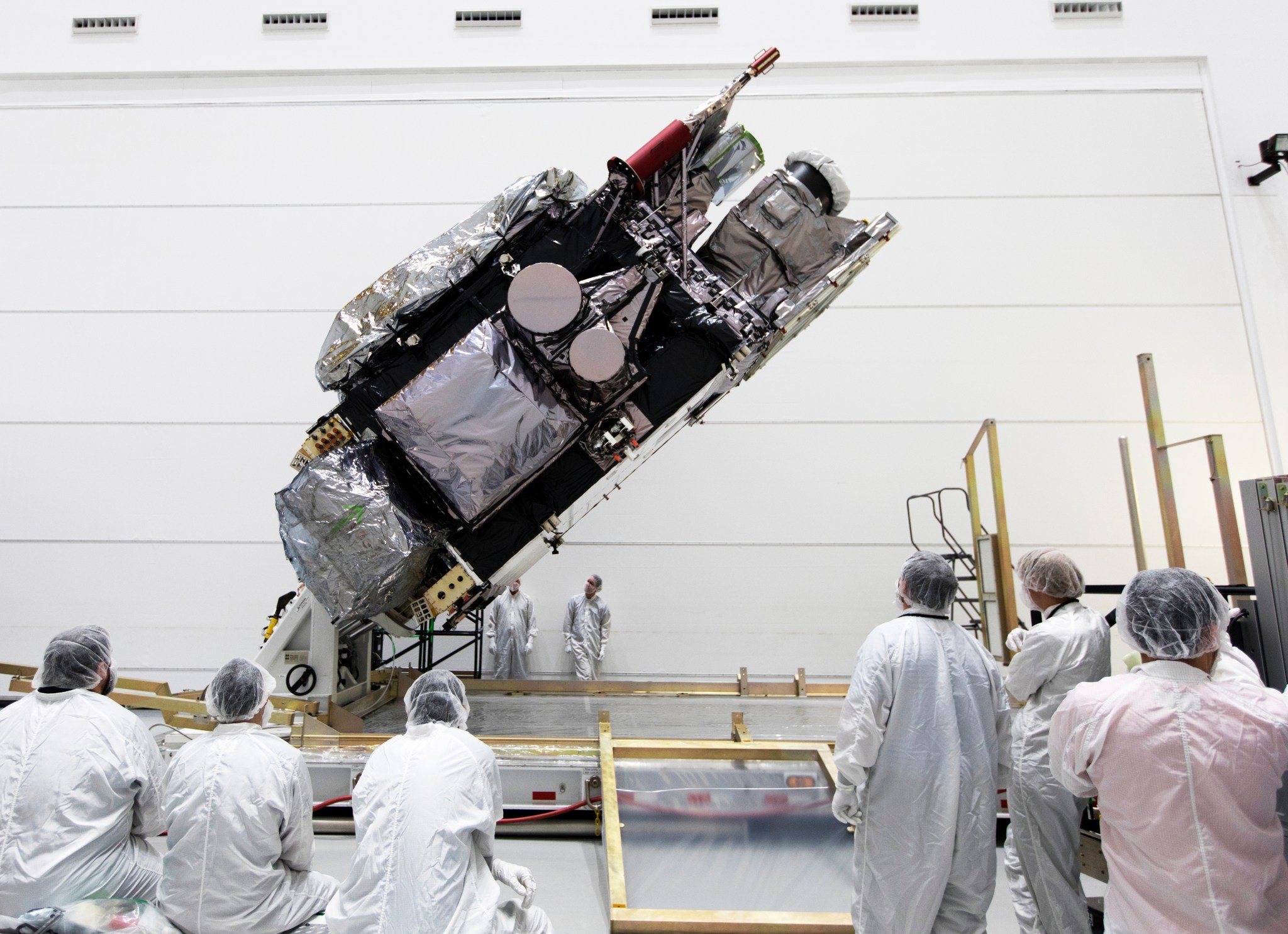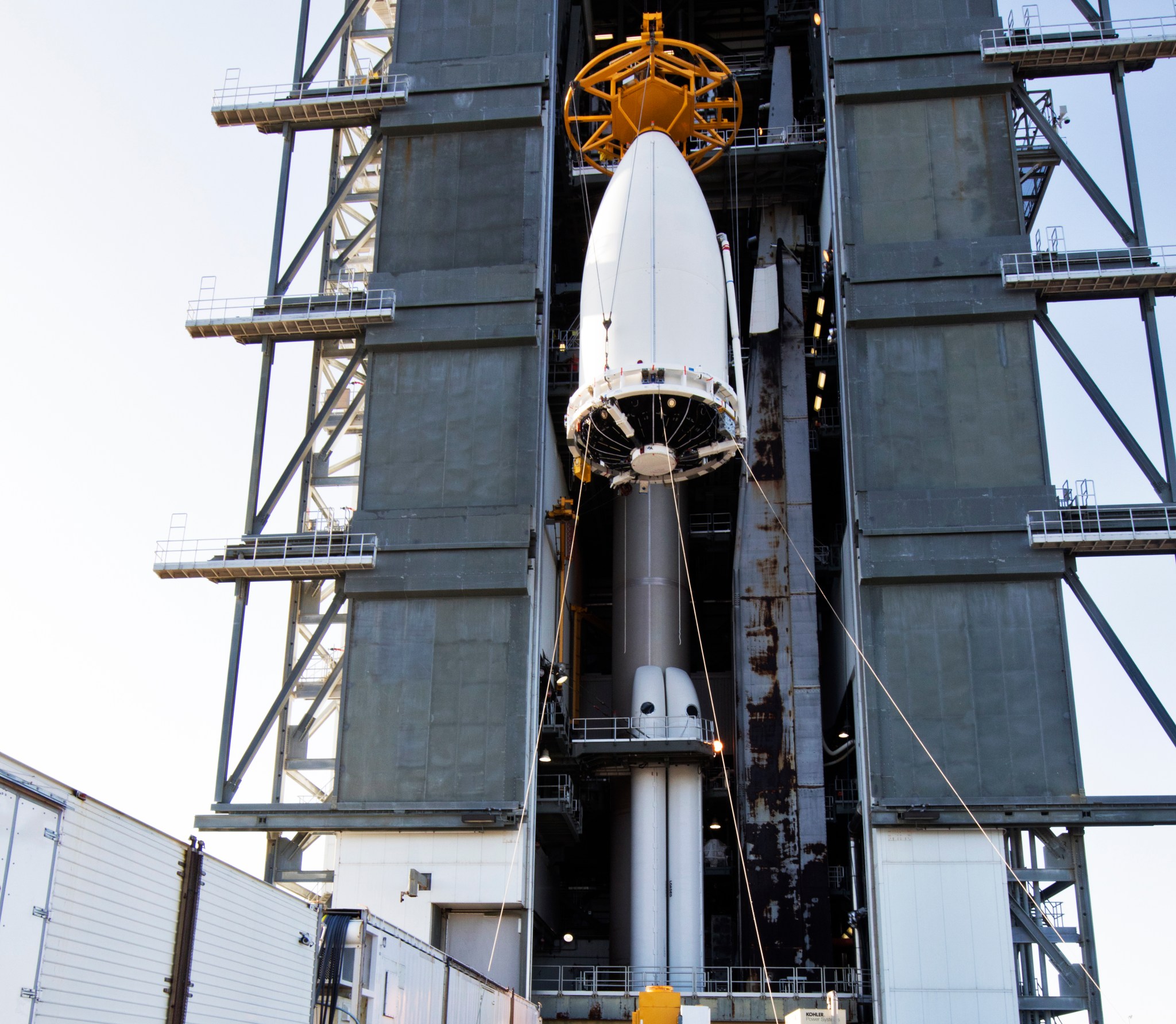By Bob Granath
NASA’s Kennedy Space Center, Florida
NASA launched the Geostationary Operational Environmental Satellite-S into orbit for NOAA — the National Oceanic and Atmospheric Administration on March 1, 2018. Liftoff occurred at 5:02 p.m. EST atop a United Launch Alliance (ULA) Atlas V rocket from Space Launch Complex (SLC) 41 at Cape Canaveral Air Force Station in Florida.
The spacecraft, known as GOES-S, will give meteorologists an additional tool to significantly improve the detection and observation of environmental phenomena that directly affect public safety and protection of property.
GOES-S is the second in the GOES-R Series of next-generation weather satellites that includes GOES-R (now GOES-16), -S, -T and -U. GOES-S will be renamed GOES-17 when it reaches geostationary orbit. It will reside in a geostationary position over the Pacific Ocean to provide imagery and data to improve weather forecasts for the western continental U.S., Alaska, Hawaii, and Pacific Ocean to New Zealand. Geosynchronous satellites orbit about 22,000 miles above the Earth allowing them to keep constant watch over the same location. These spacecraft play a crucial role in U.S. weather monitoring and forecasting.
The GOES-S satellite was delivered to Kennedy’s Shuttle Landing Facility by a U.S. Air Force C-5 Galaxy cargo jet on Dec. 4, 2017. GOES-S was then transported to the Astrotech payload processing facility in Titusville where it was checked out and tested.
Meanwhile on Jan. 22 the ULA Atlas V booster and Centaur upper stage arrived aboard a Mariner transport ship at Port Canaveral’s Army Wharf. The rocket stages then were transported to the Atlas Spaceflight Operations Center (ASOC) near SLC 41 at the Cape for inspections and checkouts.
On Jan. 24, the Centaur upper stage was transported from the ASOC to the Delta Operations Center for further processing. A week later, the Atlas V booster was moved from the ASOC to the Vertical Integration Facility at SLC 41 where it was positioned on its launcher. Soon after, the Centaur was stacked on the booster.
Once checkouts and processing were completed at the Astrotech facility, GOES-S was encapsulated in its payload fairing and transported to the Cape where it was mounted on top of the rocket.
NOAA manages the GOES-R Series Program through an integrated NOAA/NASA office and oversees the acquisition of the program ground system. NASA oversees the acquisition of the spacecraft, instruments and launch vehicles. Lockheed Martin Space of Littleton, Colorado, built the spacecraft and is responsible for spacecraft development, integration and testing.
Mission operations are performed by NOAA at their Satellite Operations Facility in Suitland, Maryland. Harris Corp. of Melbourne, Florida, provided the main instrument payload, the Advanced Baseline Imager and the ground system, which includes the antenna system for data receipt. United Launch Alliance of Centennial, Colorado, is the provider of the Atlas V launch service. NASA’s Launch Services Program (LSP), based at Kennedy Space Center in Florida, manages the agency’s efforts to commercially provide rockets for specific missions. LSP also directs the overall launch effort including overseeing development and integration of the rocket with the spacecraft.
For more information about the GOES-R Series Program, visit: http://www.goes-r.gov.






























